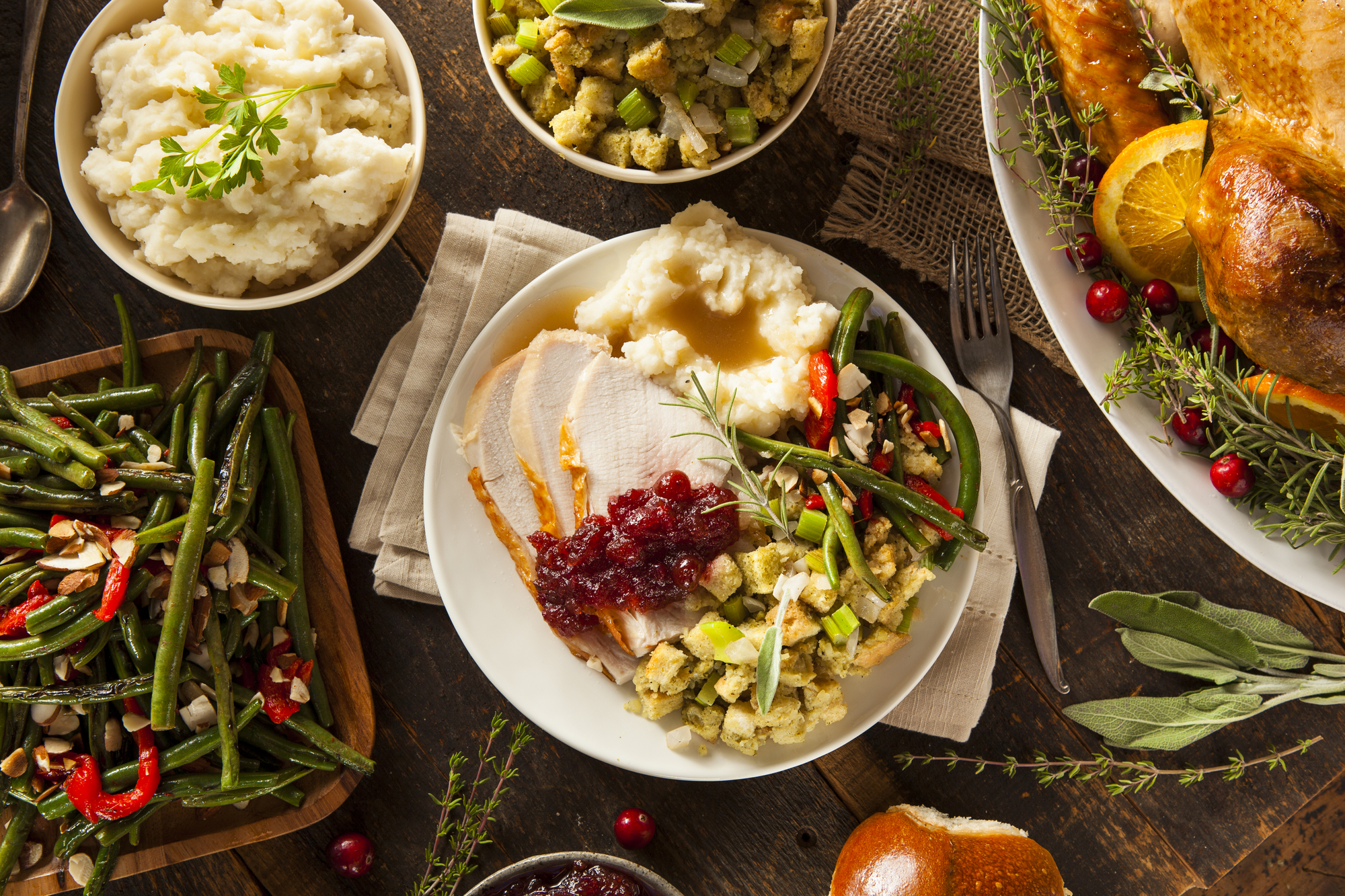

Eating less is not generally a goal on Thanksgiving. It’s a day of stuffing both turkey butts and our own stomachs. If you want to test the limits of your digestive system, go for it. We at Popular Science will never judge you for wanting a second helping of mashed potatoes. Heck, we even wrote a guide to eating as much as humanly possible.
But eating less at Thanksgiving is a noble endeavor. Perhaps you’re trying to cut down on food waste and want to keep your caloric consumption down to what you’re actually capable of enjoying. Maybe you just don’t want to be painfully full. Or maybe you’re trying to lose weight, or just maintain the status quo rather than entering the usual holiday cycle of binging and dieting. Whatever the reason, sometimes we want to avoid our basest urges—that is, to eat and eat and eat until no more pie can possibly fit inside our bellies.
This guide is for that.
Start with water
Your body feels full for a number of reasons, and one of them is the stretch receptors in your stomach. The muscle-y bag we call our stomach is pretty small when empty, only about the size of a soda can. But it can expand to hold around two to four liters when totally full. As the organ stretches, the nerves embedded inside send signals to the brain indicating how physically full it is.
There are other, more long-lasting changes that happen when you consume lots of calories. As you start to digest, your brain prompts your endocrine system to pump out hormones that make you feel satiated. But you can temporarily trick your brain by drinking several glasses of water.
Water, like all liquids, is a fairly dense substance. It can’t be compressed down like fluffy bread or other starches—which can pack into the stomach in large quantities—so it doesn’t take a ton of liquid to trigger those stretch receptors. Of course, it won’t make you feel full in the long term. Water doesn’t contain nutrients and it doesn’t need to be broken down, so none of those digestive steps that prompt feelings of satiety happen. The full feeling you get from water will only last a short time, but if you drink a few glasses about 10 minutes before the meal, you’ll go into it less hungry and will probably end up eating less. By the time your stomach has figured out that you were tricking it with plain ol’ H-2-O, it will already be contending with your turkey and stuffing, so you really will feel satiated.
Begin with the turkey
This is essentially the opposite of our advice on how to begin the meal if you want to eat the most. Protein and fats are the biggest triggers for those hormones and enzymes that make you feel full, and turkey contains plenty of both (especially if you eat it doused in gravy). Starchy foods like potatoes and bread don’t have the same effect, though they do spike your insulin.
So if the goal is to feel full quickly, start with the bird, then move on to the taters. Better yet, eat a small, healthy snack (read: not something sugary or starchy) an hour or so before dinner to kickstart those hormones, and then move on to the gobbler.
Eat s-l-o-w-l-y
Part of the reason scarfing down food can make you feel so sick is that there’s a lag between when you chew and when that mouthful contributes to your fullness. The bolus of meat or cranberry sauce has to travel down your esophagus, reach the stomach, trigger the hormone release, and start to be digested. Once it’s passed on to the intestines, even more hormonal signals help you to sustain that satiated feeling.
Shoving food down your gullet as quickly as possible means you’re taking in calories faster than your body can register them. Once you feel truly full, it’s remarkably hard to continue eating. You’ll start to get ill, and the mere sight of food will be enough to make you queasy. The lag time—which is somewhere around 20 minutes—is a loophole in the system that allows you to overeat.
Close the loophole by going slowly. One easy fix: Don’t pick up a forkful of food until you’ve swallowed the one you’re working on. That might not seem like a lot of delay, but you’d be surprised at how frequently you have the next bite ready before you’ve even finished chewing the previous one. You could also try talking to the person next to you at the table. The more you chat, the longer it will take you to finish the meal.
Enjoy your food
This sounds like generic advice, especially on a day filled with so many treats, but it’s actually going to help you eat less. Taking the time to consider your food as you consume it—to really savor the flavor of the gravy as it combines with the buttery mashed potatoes—helps you to feel full faster. That’s because you’re more aware of the signals your body is sending you.
It’s also why eating in front of the TV prompts you to eat about 25 percent more calories than you would otherwise. Distracted eating allows you to shovel in spoonfuls that your brain is trying to tell you not to consume. Listen to your brain for once.
Also, and perhaps most importantly of all, you should enjoy your food simply because food is a joy. Thanksgiving shouldn’t be about depriving yourself of the things you love. You should eat that slice of pie and that wiggly bit of cranberry jelly, if only because self-deprivation leads to unhealthy eating habits. It’s far better to have a modest piece of pumpkin-y goodness now than to get into a pattern of avoidance that will ultimately prompt you to binge later. Eat the pie. Savor it. Just take a little bit of a break before you dive in for another.
